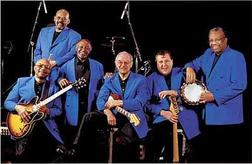thefunkbrothers
... the people who make the music
The Funk Brothers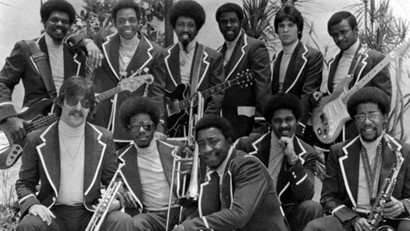
The Funk Brothers was the nickname of Detroit, Michigan, session musicians who performed the backing to most Motown Records recordings from 1959 until the company moved to Los Angeles in 1972. They are considered one of the most successful groups of studio musicians in music history. The Funk Brothers played on Motown hits such as "My Girl", "I Heard It Through the Grapevine", "Baby Love", "Signed, Sealed, Delivered I'm Yours", "Papa Was a Rollin' Stone", "The Tears of a Clown", "Ain't No Mountain High Enough", and "(Love is Like a) Heat Wave".
The role of the Funk Brothers is described in Paul Justman's 2002 documentary film Standing in the Shadows of Motown, based on Allan Slutsky's book of the same name. The opening titles claim that the Funk Brothers have "played on more number-one hits than The Beatles, Elvis Presley, The Rolling Stones, and The Beach Boys. Combined." Early members included bandleader Joe Hunter and Earl Van Dyke (piano); James Jamerson (bass guitar); Benny "Papa Zita" Benjamin and Richard "Pistol" Allen (drums); Paul Riser (trombone); Robert White, Eddie Willis, and Joe Messina (guitar); Jack Ashford (tambourine, percussion, vibraphone, marimba); Jack Brokensha (vibraphone, marimba); and Eddie "Bongo" Brown (percussion). Hunter left in 1964, replaced on keyboards by Johnny Griffith and as bandleader by Van Dyke. Uriel Jones joined the band as a third drummer. Late era bassist Bob Babbitt and guitarist Dennis Coffey both joined the ensemble in 1967. While most of Motown's backing musicians were African American, and many originally from Detroit, the Funk Brothers included white players as well, such as Messina (who was featured guitarist on Soupy Sales's nighttime jazz TV show in the 1950s), Brokensha (originally from Australia), Coffey, and Pittsburgh-born Babbitt. 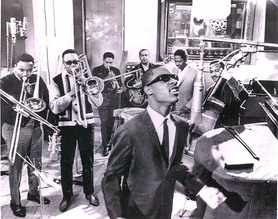
There have been many articles written which identify the actual members of the Funk Brothers, some of which claim that virtually every musician who ever played on a Motown track was a "Funk Brother". In actuality, there are 13 Funk Brothers as identified in the film Standing In The Shadows Of Motown, as well as 13 members identified by both NARAS for the Grammy Lifetime Achievement Award, and recognized by the recent Star on the Hollywood Walk of fame. Despite that, many other musicians contributed to the Motown Sound, including many horn and string players, as well as background vocalists, not officially included in the Funk Brothers group.
Of the recognized members, Benjamin died in 1969, Jamerson in 1983, Brown in 1984, Van Dyke in 1992, White in 1994, Allen and Griffith in 2002, Hunter in 2007, Jones in 2009 and Brokensha in 2010. Unlike their Stax Records backing-band contemporaries Booker T and the M.G.'s in Memphis, until the release of the Standing in the Shadows of Motown documentary, the members of the Funk Brothers were not widely known. Studio musicians were not credited by Motown until Marvin Gaye's What's Going On in 1971, although Motown released a handful of singles and LPs by Earl Van Dyke. The Funk Brothers shared billing with Van Dyke on some recordings, although they were billed as "Earl Van Dyke & the Soul Brothers", since Motown CEO Berry Gordy, Jr. disliked the word "funk". 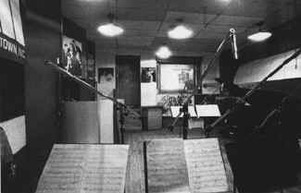
Alternatively, the name "Funk Brothers" could have been given to the band ex post facto; the term "funky" as an adjective came to be associated with uptempo and backbeat, southern-styled soul music in the second half of the 1960s;
the term "funk" as a noun is typically associated with uptempo soul music from
the 1970s onwards. In the "Standing in the Shadows of Motown" documentary, Joe
Hunter states that the name "The Funk Brothers" came from Benny Benjamin. Hunter states that Benjamin was leaving the studio (known as the Snake Pit) after session work, paused on the stairs, turned and said to his fellow musicians, "You all are the Funk Brothers". The band was then informally named.
The band used innovative techniques. For example, most Motown records feature two drummers, playing together or overdubbing one another—Marvin Gaye's "I Heard It Through the Grapevine" used three drummers. A number of songs utilized instrumentation and percussion unusual in soul music. The Temptations' "It's Growing" features Earl Van Dyke playing a toy piano for the song's introduction, snow chains are used as percussion on Martha & the Vandellas' "Nowhere to Run", and a custom oscillator was built to create the synthesizer sounds used to accent several Holland-Dozier-Holland compositions and productions, such as Diana Ross & the Supremes' "The Happening" and "Reflections." A tire iron was used in the Martha & the Vandellas "Dancing in the Streets". James Jamerson, who began his career playing upright bass, adopted the Fender Precision Bass electric instrument in 1962, and played both acoustic and electric bass on many Motown recordings. Jamerson would usually play the acoustic bass for the ensemble take and then dub the same part on electric bass afterward. He was praised for being so precise a player that listeners cannot tell right away that two basses are on the recording. And like such producers as Brian Wilson, George Martin, and Phil Spector, it wasn't uncommon for Motown composers or the Funk Brothers musicians to seek unique instrument combinations for certain lines; doubling piano, bass, and vibraphone (such as on some of the Four Tops's hits) was practically a Motown trademark, too. 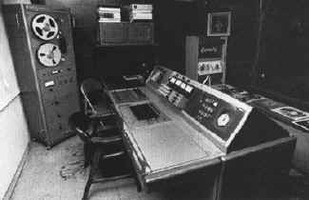
The Funk Brothers often moonlighted for other labels, recording in Detroit and elsewhwere, in bids to augment their Motown salaries. It became a worst-kept secret that Jackie Wilson's 1967 hit "(Your Love Keeps Lifting Me) Higher & Higher" didn't have a Motown influence quite by accident—the Funk Brothers migrated to do the Wilson session, in an interesting reference to Motown's early history: Berry Gordy, Jr. got his first music break by getting Wilson to record some of his songs (most famously "Reet Petite") in the 1950s. Various Funk Brothers also appeared on such non-Motown hits as "Cool Jerk" (The Capitols), "Agent Double-O Soul" (Edwin Starr, before that singer joined Motown itself), "(I Just Wanna) Testify" by The Parliaments, and blues giant John Lee Hooker's "Boom Boom."
Motown historiographers have also noted that the Funk Brothers—some of whom had begun their careers as jazzmen and missed that kind of informality—itched to be able to record on their own, but Gordy limited them formally to cutting sides under the name Earl Van Dyke and the Soul Brothers… and mostly limited them to recording new versions (with the familiar arrangements, however) of the Motown repertoire, with Van Dyke the feature musician playing electric organ. Some of the Funk Brothers' recordings in that vein—"Soul Stomp," "Six By Six"—became eventual favourites among Northern soul and "beach music" fans. - From Wikipedia, the online Encyclopedia |
